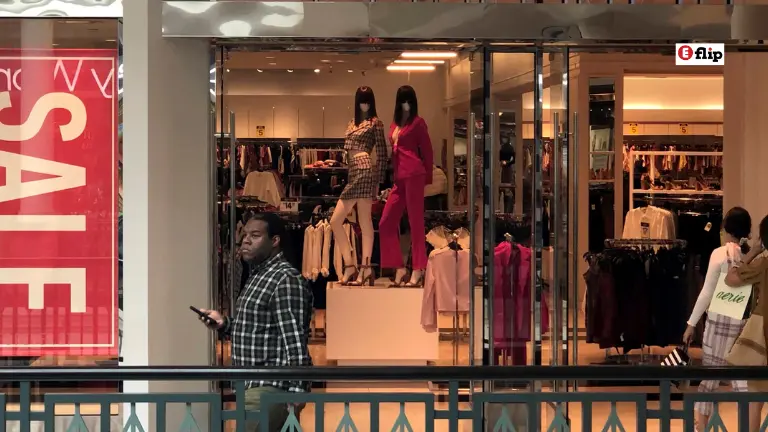The fast-fashion world was rocked on April 15, 2025, when news broke that Forever 21’s creditors are bracing for significant losses under the retailer’s latest bankruptcy plan. The Forever 21 bankruptcy 2025 saga, unfolding in a Delaware courtroom, paints a grim picture for suppliers, vendors, and other unsecured creditors, who are set to recover just 3-6% of their $433 million in claims. Attorney Justin Alberto, representing these creditors, didn’t mince words during a virtual hearing, stating they were “getting smoked” by a restructuring plan that prioritizes other debts over theirs. For a brand once synonymous with trendy, affordable fashion, this second Chapter 11 filing in six years signals a deeper crisis in the retail landscape.
As someone who remembers shopping at Forever 21’s bustling mall stores as a teenager, this news feels personal. The vibrant racks of $5 tops and the thrill of snagging a deal are now overshadowed by the harsh realities of debt, competition, and a changing market. In this blog, I’ll dive into the details of the Forever 21 bankruptcy 2025, the creditors’ plight, the controversial JCPenney deal, and what this means for the future of fast fashion. Let’s unpack this retail tragedy and explore its human and economic impact.
The Bankruptcy Filing: A Second Blow for Forever 21
Forever 21’s U.S. operating company, F21 OpCo, filed for Chapter 11 bankruptcy on March 16, 2025, marking its second trip to bankruptcy court since 2019. With $1.6 billion in debt and assets estimated between $100 million and $500 million, the retailer is drowning in financial woes. The Forever 21 bankruptcy 2025 plan aims to wind down U.S. operations, liquidating 354 stores unless a buyer emerges for the remaining assets. Court filings reveal a brutal reality: unsecured creditors, including U.S. and China-based manufacturers and suppliers, will receive a mere 3-6% of their $433 million claims, a recovery rate that’s left many reeling.
I can’t help but think of the small businesses and workers behind those unpaid claims. These are factories, designers, and logistics teams who trusted Forever 21 to honor their contracts. The Forever 21 bankruptcy 2025 hits them hardest, threatening their livelihoods in an already tough economy.
Creditors “Getting Smoked”: The Human Cost
At the heart of the Forever 21 bankruptcy 2025 is the plight of unsecured creditors, who are bearing the brunt of the retailer’s collapse. Attorney Justin Alberto, representing a committee of creditors, described the proposed plan as “dire” during the April 15 hearing. Suppliers and vendors, many of whom are small to medium-sized businesses, face recoveries so low that some may not survive. A court filing on April 10 warned, “The viability of certain of Forever 21’s largest vendors and the livelihoods of their employees are on the line.”
The JCPenney Deal: A Controversial Twist
A major point of contention in the Forever 21 bankruptcy 2025 is a January 2025 deal where JCPenney acquired Forever 21’s parent, SPARC Group, forming a new entity called Catalyst Brands. The unsecured creditors’ committee alleges this acquisition “obligated” Forever 21 to pay JCPenney’s existing debt, further draining resources that could have gone to suppliers. Attorney Alberto revealed the committee is “aggressively investigating” this deal, suspecting it may have disadvantaged creditors.
It’s frustrating to think that corporate reshuffling might have worsened the outcome for smaller players. The Forever 21 bankruptcy 2025 saga feels like a David-and-Goliath story, with creditors fighting for scraps while bigger entities navigate the fallout.
Why Forever 21 Fell: A Perfect Storm
The Forever 21 bankruptcy 2025 didn’t happen overnight. Founded in 1984 by Do Won and Jin Sook Chang, Forever 21 became a fast-fashion powerhouse, peaking with 800 global stores and $4 billion in annual sales. Its large-format stores, averaging 38,000 square feet, were mall staples, drawing budget-conscious teens with trendy $5 tops. But the retail landscape shifted, and Forever 21 couldn’t keep up.
Several factors fueled its decline:
- E-Commerce Competition: Online retailers like Shein and Temu leveraged the “de minimis” exemption, allowing duty-free imports of low-value packages from China. This gave them a pricing edge Forever 21 couldn’t match.
- Mall Decline: With dwindling foot traffic, Forever 21’s reliance on mall-based stores became a liability. Leases with landlords like Simon Property Group (27% of stores) and Brookfield (19%) grew costlier as sales dropped.
- Inflation and Losses: Rising freight costs, wage inflation, and supply chain disruptions eroded profits. A 2021 e-commerce platform upgrade backfired, causing checkout issues and lost revenue.
- Failed Strategies: A 2023 partnership with Shein, meant to boost sales, didn’t stem losses. Authentic Brands CEO Jamie Salter later called acquiring Forever 21 “the biggest mistake I made.”
Reading about these challenges, I’m reminded of my own visits to Forever 21 stores, now eerily quiet compared to their heyday. The Forever 21 bankruptcy 2025 reflects a broader truth: even iconic brands must evolve or risk fading away.
What’s Next for Forever 21 and Its Creditors?
The Forever 21 bankruptcy 2025 plan outlines a dual-track strategy: liquidate 354 U.S. stores by May 1, 2025, while seeking a buyer for remaining assets. Store closing sales, managed by Hilco, Gordon Brothers, and SB360 Capital Partners, are underway, but no “going-concern” buyer has emerged. If liquidation proceeds, Forever 21’s U.S. retail presence may vanish, though its international stores and Authentic Brands’ intellectual property will persist.
A Personal Reflection
Writing about the Forever 21 bankruptcy 2025 has been bittersweet. I remember saving my allowance to buy earrings or a dress from Forever 21, feeling like I was part of something cool and accessible. Now, learning about the creditors’ losses and the brand’s struggles, I see the hidden costs of those cheap clothes. The workers, suppliers, and families affected by this bankruptcy deserve more than 3-6% of what they’re owed—they deserve a system that values their contributions.
This story also makes me think of my cousin, who runs a small business and once faced a client’s bankruptcy. The stress of unpaid invoices lingered for months, affecting her employees and her peace of mind. The Forever 21 bankruptcy 2025 isn’t just a corporate headline—it’s a human story of trust broken and resilience tested.
The Forever 21 bankruptcy 2025 is a wake-up call for the retail industry and consumers alike. What are your thoughts on Forever 21’s collapse and the creditors’ losses? Have you been affected by retail bankruptcies as a shopper or business owner? Share your story in the comments below—I’d love to hear your perspective! Spread awareness by sharing this blog with friends and family, and subscribe to our newsletter for more insights on retail, finance, and beyond. Let’s keep the conversation going and support fairer practices in the industry!









